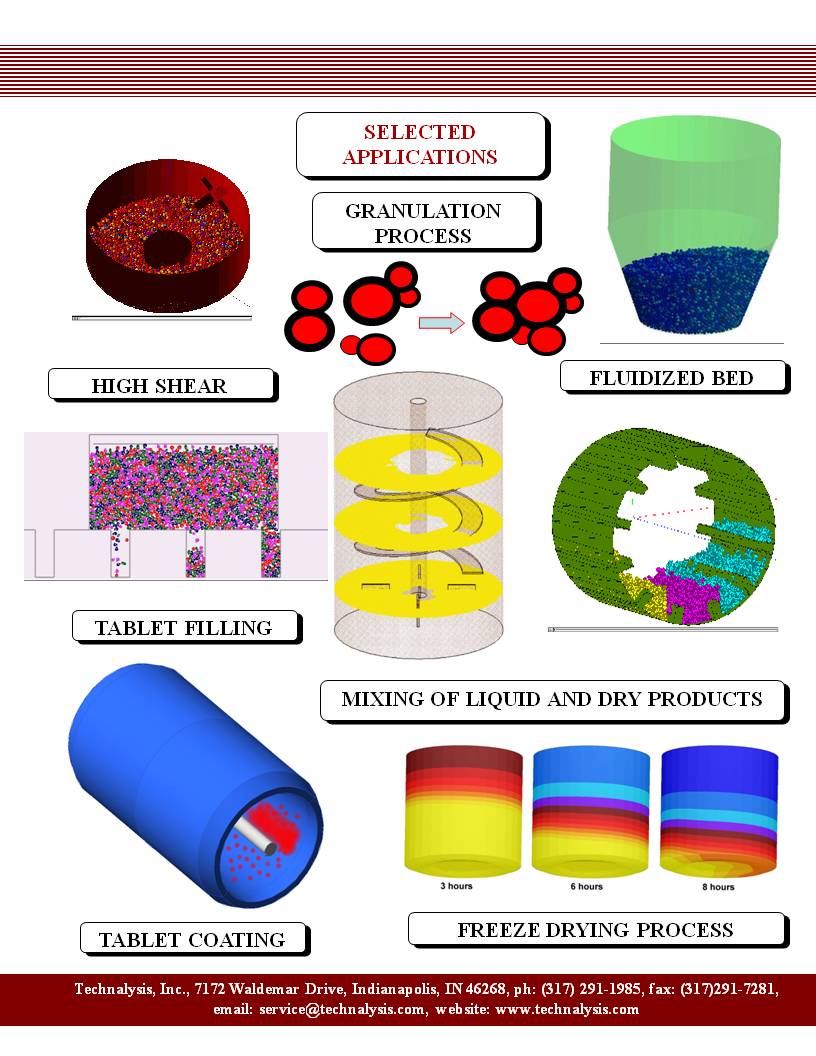Introduction of Simulation Tools for Pharmaceutical, Food and
Chemical Process Industries
Process industries generally rely on the technology of equipment
manufacturers in process development. For a new material or process,
equipment manufacturer proposes a solution based on experience. For example,
granulation process has to be developed for a new powder. A prototype is
built and tested. After some experimentation full scale equipment is built.
This approach is time consuming and has certain pitfalls. If a new material
or process is being developed, the manufacturer's experience is limited. On
the other hand, the process company has limited knowledge of the equipment.
After a series of tests, a prototype is designed. After a prototype is built
and tested, the physical properties of the material required to describe the
process is measured fully for the first time. Yet, the measurements from the
prototype are not always sufficient to predict the full scale process.
Material and process parameters can not be scaled linearly for most
material. Sometimes, major difficulties are observed only after the full
scale equipment is built.
Process simulation to complement and improve process development is being
introduced rather slowly. In product development, simulation tools are
widely used. For designing an automobile or an airplane one cannot imagine
only testing and not using simulation tools. Many times, chemical engineers
or food scientists are more concerned about the properties of materials for
other concerns than manufacturing. Manufacturing process is addressed after
the material is developed. Thus, in pharmaceutical, food and chemical
industries, optimization of manufacturing processes may hot have attracted
as much attention as the product industries. On the other hand the concerns
are similar: time to market, quality and efficiency in production.
In introducing simulation to process industries the following steps can be
suggested:
- Early in the development of the material and the process, physical
properties of the material can be measured even if a small amount of
material is available in a test tube.
- This new material and process can be simulated and optimized toward the
design of the prototype.
- After the prototype is built, it would be used to complement and validate
the simulation model. Further optimization can be accomplished by the
simulation model in shorter time than if only the prototype was used.
- Scale-up to full scale is then conducted through simulation before the
full scale model is built. The critical parameters and possible difficulties
can be predicted ahead of time.
- After the full scale model is built and tested, simulation models can be
used for further optimization.
The above process can be conducted jointly by the material/process developer
and the equipment manufacturer. It allows specific information exchange
between the two parties since simulation models provide much more detailed
information than what can be measured. They also provide a better
understanding of critical material properties and process conditions.
During the recent years, we see more applications of simulation to process
industry. Yet, the progress has been slow mainly due to the complexity of
materials and processes. It is not practical to expect off the shelf
software to answer all the questions for such problems. The implementation
of simulation tools require software which can model the entire problem and
is validated for that process. This requires close cooperation between the
process and software developers.
Technalysis' Services for Pharmaceutical Industry
|
| Brochure (.pdf) |
 |
Related Software
Contact
Technalysis to learn more about
Technalysis®
Engineering capabilities for Pharmaceutical, Food and Chemical
Process Industries